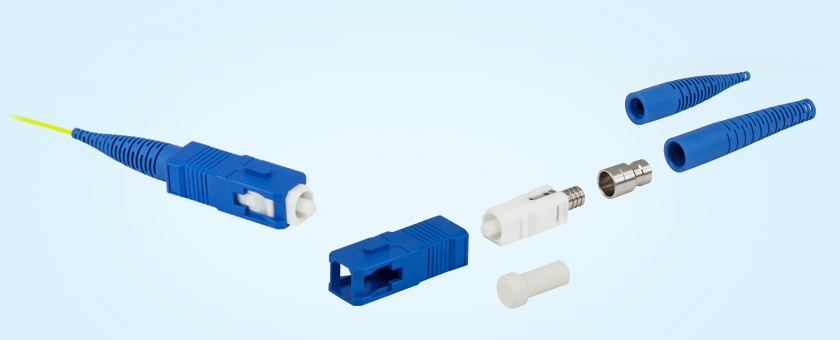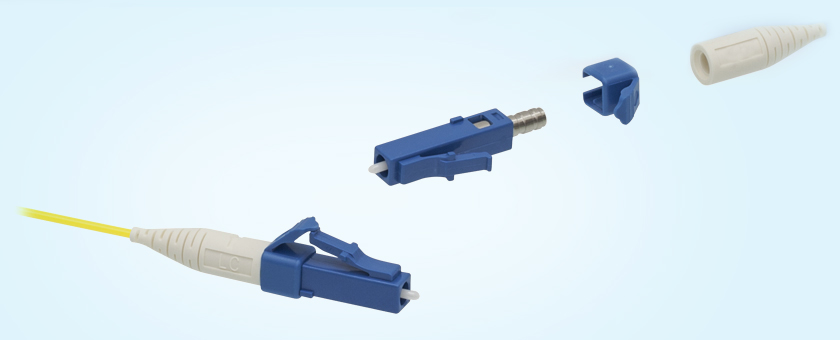Optical connectors are used for connection between network devices at data centers and for the connection of fiber optic cable to equipment on customer premises (e.g. FTTH). Among the various types of fiber connector, SC and LC are two of the most commonly used connectors. SC vs LC: what’s the difference and which one is better? If you still have no answer yet. You may find some clue here.

What Is SC Connector?
Developed by the laboratories at Nippon Telegraph and Telephone (NTT) in the mid-eighties, SC connector was one of the first connectors to hit the market following the advent of ceramic ferrules. Sometimes referred to as the “square connector” the SC has a push-pull coupling end face with a spring loaded ceramic ferrule. Initially intended for Gigabit Ethernet networking, it was standardized into the telecommunications specification TIA-568-A in 1991 and slowly grew in popularity as manufacturing costs came down. Due to its excellent performance it dominated fiber optics for over a decade with only the ST competing with it. Thirty years on, it remains the second most common connector for polarization maintaining applications. The SC is ideally suited for datacoms and telecoms applications including point to point and passive optical networking.
What Is LC Connector?

Considered by some to be the modern replacement of the SC connector, the introduction of LC connector was less successful, partly because of the initially high license fees from inventor Lucent Corporation. As a push-pull connector also, the LC utilizes a latch as opposed to the SC locking tab and with a smaller ferrule it is known as a small form factor connector. Having half the footprint of the SC connector gives it huge popularity in datacoms and other high-density patch applications, as its combination of small size and latch feature make it ideal for densely populated racks/panels. With the introduction of LC compatible transceivers and active networking components, its steady growth in the FTTH arena is likely to continue.
SC vs LC: How They Differ From Each Other

After having a basic understanding of both SC and LC connector, you may ask what are the differences and what do they mean to your implementation? The table below gives an overview of strengths and weaknesses. And generally speaking, the difference between LC and SC fiber optic connector lies in the size, the handling and the connector history, which will be discussed respectively in the following text.
- Size: LC is half the size of SC. Actually, one SC-adapter is exactly the same size as a duplex LC-adapter. Therefore LC is more and more common in central offices where packing density (number of connections per area) is an important cost factor
- Handling: SC is a true “push-pull-connector” and LC is a “latched connector”, although there are very innovative, real “push-pull-LCs” available which have the same handling capabilities like SC.
- The History of Connector: The LC is the “younger” connector of the two, SC is wider spread around the world but LC is catching up. Both connectors have the same insertion loss and return loss capabilities. Generally, it depends where in the network you want to use the connector, no matter SC or LC, even the other different kinds of connector.
Summary
Present and future communication technology demand fast, efficient and safe performance in the data communication process. Large and complex databases all interconnected must be able to receive and transmit data without outside interference. Both SC and LC are designed to achieve such a kind of transmission. As for the question “SC vs LC: what’s the difference and which one is better?”, you just need to keep three basic points in mind: 1. SC has a larger connector housing and a larger 2.5mm ferrule. 2. LC has a smaller connector housing and a smaller 1.25mm ferrule. 3. SC used to be all the rage, but now it’s LC. You can fit more interfaces on line-cards, panels, etc with LC connector.
Post time: Nov-29-2021

